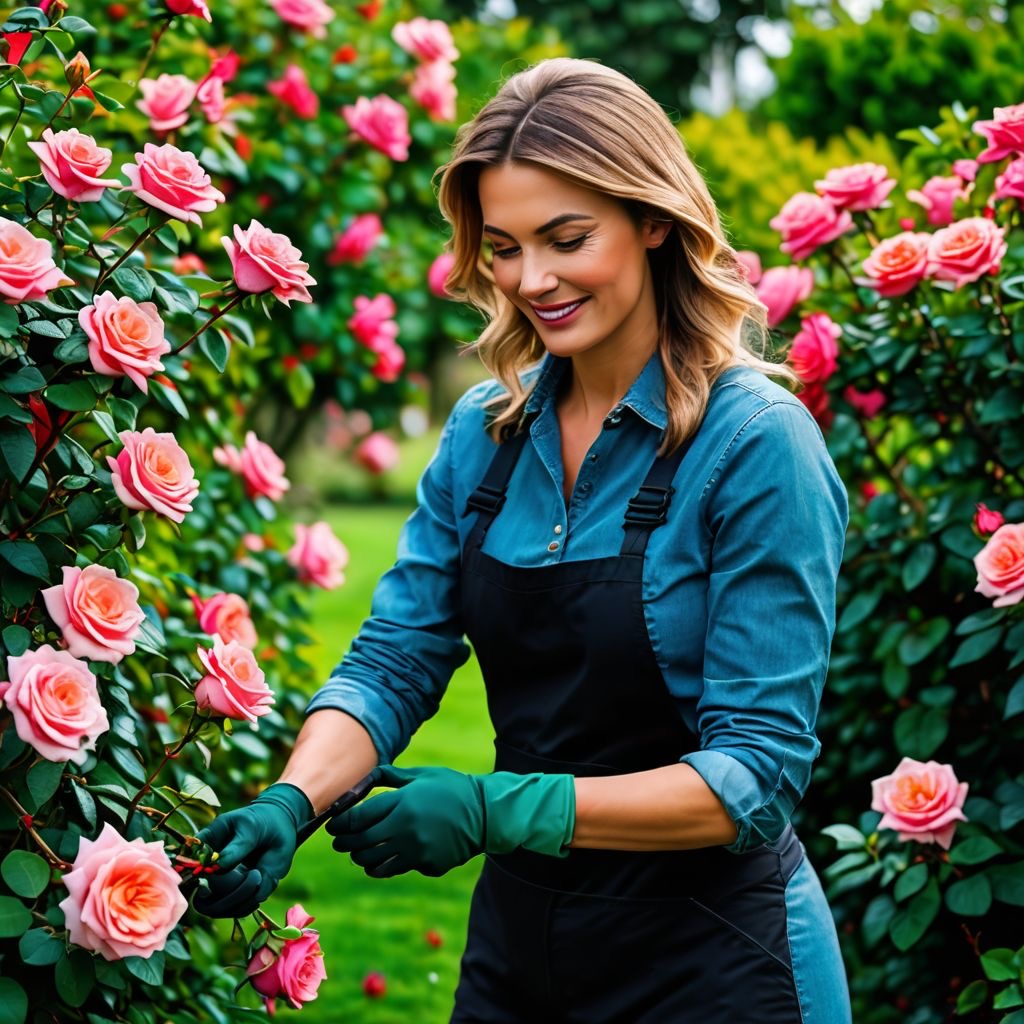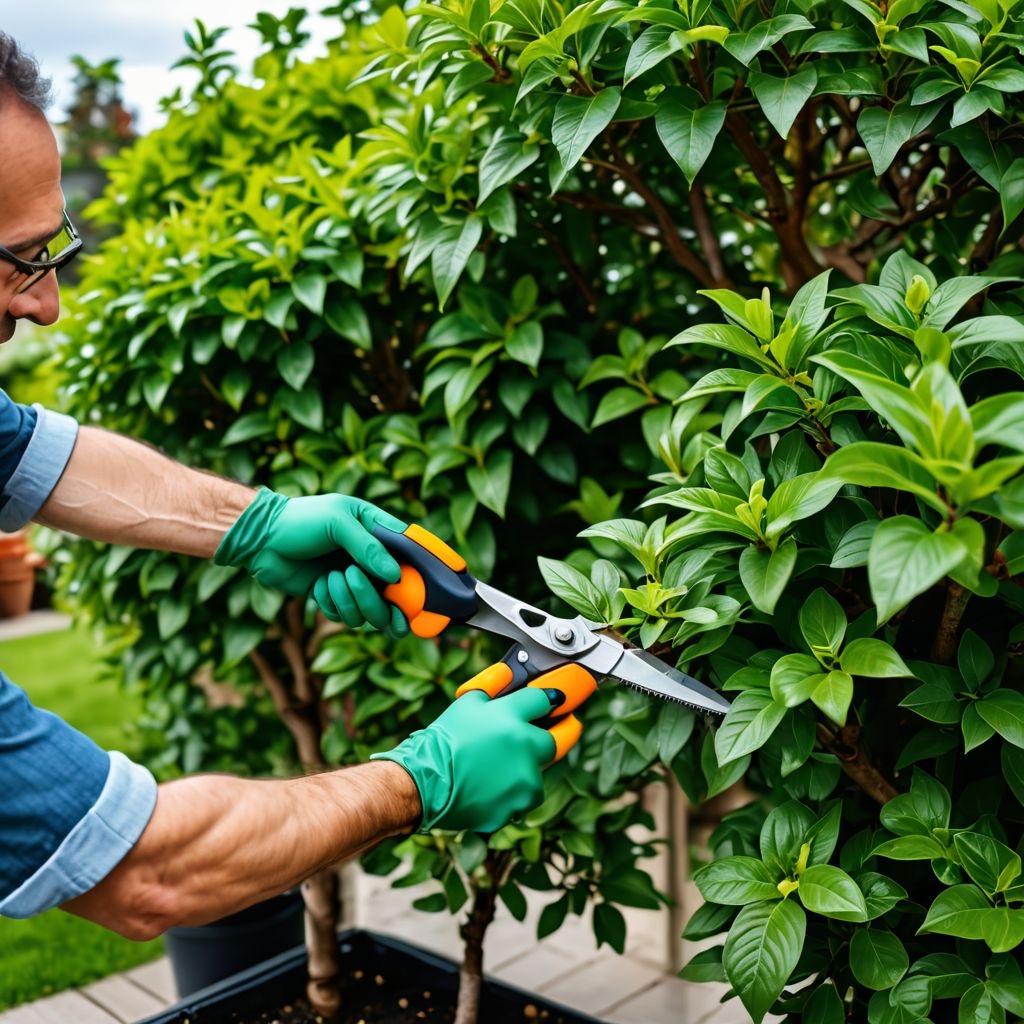
Table of Contents
1. Introduction
2. Understanding Pruning
- 2.1 What is Pruning?
- 2.2 Why Prune Your Plants?
3. The Science of Plant Growth
- 3.1 How Pruning Affects Growth
- 3.2 Different Types of Pruning
4. When to Prune
- 4.1 Seasonal Considerations
- 4.2 Plant-Specific Timing
5. Tools and Techniques for Effective Pruning
- 5.1 Essential Pruning Tools
- 5.2 Pruning Techniques
6. Steps for Pruning Various Types of Plants
- 6.1 Pruning a Flower Garden
- 6.2 Pruning in Your Home Garden
- 6.3 Special Considerations for Perennials
7. Dealing with Common Mistakes
- 7.1 Over-Pruning
- 7.2 Timing Errors
8. Enhancing Your Pruning Skills
- 8.1 Learning from Resources
- 8.2 Engaging with Local Experts
9. Conclusion
Introduction
Welcome to the wonderful world of gardening, where even a small slice of dirt in your backyard can transform into the envy of your neighbors! In this blog essay, we are going to dive deeply into the art and science of pruning—a technique that can dramatically enhance the look and health of your home garden, whether it’s a vibrant rose garden or a serene flower garden.
Now, you might be thinking, “Pruning? Isn’t that just hacking off a few branches to make my plants look tidy?” Oh, my friend, if only it were that simple! Pruning is much more than mere aesthetic upkeep; it's like giving your plants a spa day. It promotes healthier growth, encourages flowers to bloom, and can even set the stage for lush future displays.
For homeowners in Winnipeg, with its unique Winnipeg-style climate quirks, mastering pruning can mean the difference between a flourishing landscape and a forgotten patch of earth. In this comprehensive guide, we will explore the nitty-gritty aspects of pruning—from understanding its basic principles to navigating the best tools for the job and timing them just right.
We'll also address common pitfalls, like the double-edged sword known as over-pruning (trust me, your plants won’t thank you for that)! Additionally, we’ll touch on how one of the many landscaping companies Winnipeg has to offer, can provide assistance for those needing an extra hand, or if you’re feeling ambitious, how you can embrace DIY methods that infuse personal flair into your landscape design.
Are you ready to wield those shears like a gardening ninja? Whether you’re a newbie just figuring out your seeds or a seasoned pro tending an expansive yard, there’s something valuable here for everyone. So, grab your gloves, and let’s dig into the beautiful art of pruning, transforming your green space into a personal paradise that screams “Quality landscaping at its finest!”

1. Understanding Pruning

1.1 What is Pruning?
Pruning is the process of selectively removing parts of a plant, such as branches, buds, or roots. While this might sound simple, it requires a thoughtful approach to ensure that plants thrive instead of just surviving. The idea is to stimulate growth, enhance the plant's natural shape, and improve its flowering and fruiting potential. By focusing on what to cut and what to keep, homeowners can significantly influence their garden design Winnipeg visions.
1.2 Why Prune Your Plants?
Pruning serves several essential purposes:
- Health Benefits: Removing dead and diseased branches helps prevent the spread of diseases.
- Shape Maintenance: A well-pruned plant will generally have a fuller, more aesthetically pleasing shape.
- Flower and Fruit Production: Encouraging new growth leads to more blooms and fruits.
- Increased Sunlight & Airflow: Thinning plants allows sunlight and air to penetrate the canopy, reducing the risk of mold and pests.
Understanding these underlying principles can empower you as a homeowner to make informed decisions about your plants and yard maintenance Winnipeg-style.
Surprising every day kitchen helpers to keep garden pests and weeds at bay and to improve your soil.
2. The Science of Plant Growth
2.1 How Pruning Affects Growth
Pruning affects plant growth in specific and measurable ways. When done right, it can promote the production of new flowers and foliage, invigorating the plant’s energy. The cuts you make create a wound, and the plant responds by sending hormones to those areas that promote growth in directions where there’s access to light or space.
Research indicates that pruning can yield improvements in growth and health. A study published in the Journal of Horticultural Science demonstrated that properly pruned trees showed up to a 25% increase in flower production compared to those that were not pruned at all. This reinforces the importance of knowing how and when to prune.
2.2 Different Types of Pruning
There are several types of pruning techniques that can yield different outcomes, such as:
- Thinning: Removing entire branches to increase light and air penetration.
- Heading back: Cutting back stems or branches to stimulate branching and growth.
- Rejuvenation: Drastic cutting back of overgrown plants to encourage fresh growth.
Understanding the right type of pruning for your plants is crucial in achieving your desired landscape goals.
3. When to Prune
3.1 Seasonal Considerations
Timing plays a pivotal role in successful pruning. Different plants have varying seasons in which they thrive. As a rule of thumb, most deciduous plants should be pruned during their dormant period—late winter or early spring—before they break bud. Conversely, spring-flowering plants should be pruned immediately after flowering to ensure buds are set for the next season.
3.2 Plant-Specific Timing
- Roses: These beauties require pruning in early spring when the risk of frost passes.
- Fruit Trees: Late winter is generally the best time to prune fruit trees, ensuring proper growth in the spring.
- Perennials: Many perennials benefit from pruning in late fall or early spring, depending on the variety.
Recognizing the specific needs of your plants can save you time and help establish a routine that benefits your overall flower bed design.
4. Tools and Techniques for Effective Pruning
4.1 Essential Pruning Tools
Here’s a quick checklist of tools every homeowner should have handy:
- Bypass Pruners: Ideal for cutting live branches.
- Loppers: Perfect for thicker branches that need extra leverage.
- Pruning Saw: Useful for larger limbs that resist traditional tools.
- Gloves: Protect your hands from thorns and dirt.
- Disinfectant: Prevent the spread of disease by cleaning tools between plants.
Having the right tools not only gets the job done efficiently but also enhances the experience of pruning.
4.2 Pruning Techniques
Pruning isn’t merely about cutting; it’s an art. Here’s a quick guide on techniques:
- Cut at an Angle: This improves drainage and prevents water from sitting on cut surfaces.
- Make Clean Cuts: Jagged cuts can invite disease.
- Do Not Top Trees: It’s not just bad for aesthetics; it can also lead to extensive vulnerabilities.
Understanding and executing these techniques can give your plants a better chance for robust growth.
5. Steps for Pruning Various Types of Plants
5.1 Pruning a Flower Garden
When pruning your flower garden, start by cutting back faded blooms to promote more flowering and less seed production. Remove any dead or dying stems and maintain light penetration by thinning out dense areas. When dealing with perennials, wait until they’re entirely dormant before executing a harder cut.
5.2 Pruning in Your Home Garden
In your home garden, adopt a systematic approach. Assess the plant's shape first: is it full and flourishing or sparse? If it leans towards the latter, consider heading back to encourage new growth. Your goal should be to keep plants at a size manageable for your space while allowing them to flourish
.
5.3 Special Considerations for Perennials
Pruning in the realm of perennials often requires you to cut back stems to ground level after they die back. This might seem harsh, but it encourages new growth in the spring. For some types, like peonies, selective pruning can enhance bloom size.
Ready to transform your Winnipeg yard with 10-best perennial suggestions?
6. Dealing with Common Mistakes
6.1 Over-Pruning
One of the most common mistakes among homeowners is over-pruning—removing too much foliage. This can result in decreased vitality and could even kill the plant. More is not always better!
6.2 Timing Errors
Another frequent pitfall is misjudging the best timing for pruning. Be cautious about removing branches in early spring before the last frost, and always consider the specific needs and growth cycles of each plant.
7. Enhancing Your Pruning Skills
7.1 Learning from Resources
There are abundant resources available for homeowners wishing to enrich their gardening skills. Books, online tutorials, and workshops can deepen your understanding of landscaping ideas and overall maintenance for your Winnipeg yard.

7.2 Engaging with Local Experts
Connecting with experts, perhaps one of the many reliable and experienced landscaping companies Winnipeg gardeners have come to trust, can open doors for discussions on best practices and area-specific advice. Engaging with reputable "landscapers near me" is a great way to model your backyard landscape design after something tried and tested.

Your Go-To company for lawn care Winnipeg homeowners trust

